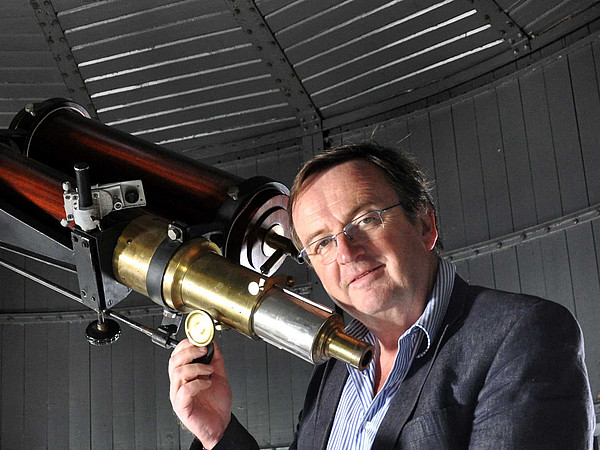Als Wissenschaftler in den Himmel gehoben werden. Buchstäblich. Das ist Astrophysiker Arnold Hanslmeier gelungen. Denn seit kurzem trägt ein Asteroid den Namen des Forschers. Asteroid Hanslmeier wurde 2001 mit der Nummer 182674 =2001 UB 225 am Apache Point Observatory in New Mexico/USA entdeckt. Das Objekt im All gehört zum Hauptgürtel der Asteroiden. „Er kann sich der Erde bis auf 225 Millionen Kilometer nähern und läuft in 4,4 Jahren einmal um die Sonne“, beschreibt der Namenspatron.
Für die Benennung von Asteroiden sind folgende Kriterien Voraussetzung: außergewöhnliche wissenschaftliche Leistungen sowie außergewöhnliche Beiträge für die Wissenschaft und Öffentlichkeitsarbeit.
Und noch einen weiteren „Stern“ auf dem Karrierepfad der Wissenschaft kann Arnold Hanslmeier verbuchen. Das Standardwerk „Einführung in Astronomie und Astrophysik“, erschienen im Springer Verlag, ist bereits in der vierten Auflage erschienen. Aufgrund der großen Nachfrage wurde das Buch nun auch in englischer Sprache als „Introduction to Astronomy and Astrophysics“ herausgegeben. Die 700 Seiten enthalten viele spektakuläre Abbildungen, darunter auch einige, die mit dem neuen James Webb-Teleskop gemacht wurden.

